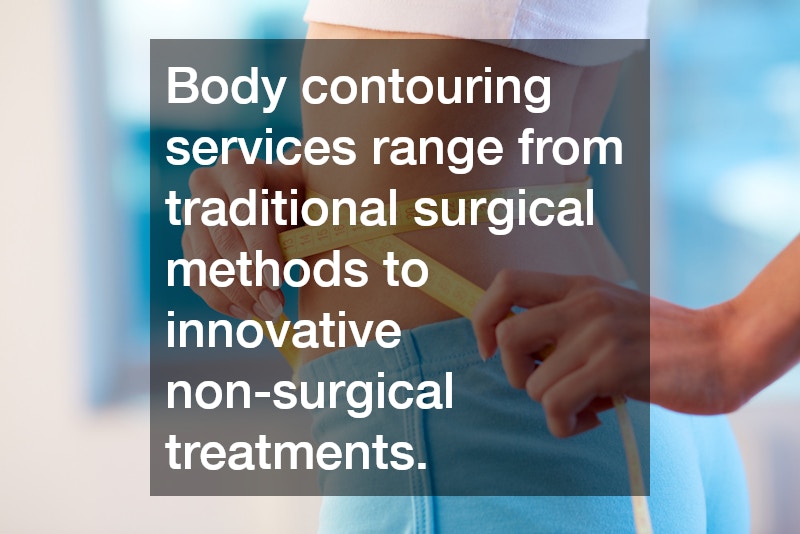In the quest for achieving desired body shapes and contours, body contouring services have emerged as popular solutions. This article explores the different types of body contouring services available today, addressing common queries and delving into specialized methods. Understanding these services can empower individuals to choose the best option for their specific needs and body goals.
What Are the Most Popular Body Contouring Treatments?
1. Liposuction
Liposuction remains one of the most sought-after body contouring treatments. This surgical procedure removes excess fat deposits, helping to reshape specific areas of the body.
It is especially popular because it can target areas that are resistant to diet and exercise, making it a versatile option for many individuals.
Ideal candidates for liposuction are individuals who have stable body weight but seek to remove undesirable fat deposits. The procedure involves small incisions and the insertion of a thin tube to suction out the fat. Recovery varies among individuals but typically includes swelling and bruising for several weeks.
2. CoolSculpting
CoolSculpting, or cryolipolysis, is a non-invasive treatment that freezes away fat cells. It’s particularly effective for targeting stubborn fat areas that do not respond to diet and exercise. The procedure is appealing because it involves no incisions, anesthesia, or downtime, allowing for a quick return to daily activities.
The process includes applying a cooling device to the skin to crystallize underlying fat cells, which the body naturally eliminates over time. This method is FDA-approved and mostly painless, making it a preferred choice for those wary of surgical procedures. Results often begin to be visible after a few weeks, with full effects noticeable after a few months.
3. Tummy Tuck (Abdominoplasty)
A tummy tuck, or abdominoplasty, is a surgical procedure aimed at removing excess skin and fat from the abdomen. Often, it also involves tightening the underlying muscles to create a firmer abdominal profile. It’s a common choice among individuals who have undergone significant weight loss or women post-pregnancy.
The procedure can significantly improve the appearance of the midsection, contributing to a more toned and flat stomach. Recovery involves at least several weeks of downtime, where physical activity is limited to guarantee proper healing. It is essential to follow the post-operative instructions to minimize complications and ensure optimal results.
How Do Non-Surgical Body Contouring Methods Compare to Surgical Ones?
1. Non-Surgical vs. Surgical Recovery Time
Non-surgical body contouring methods generally offer shorter recovery periods compared to their surgical counterparts. This makes them appealing to those with busy lifestyles. Most non-surgical procedures require little to no downtime, allowing individuals to continue with their daily activities almost immediately.
On the other hand, surgical methods, while potentially more effective in drastic shaping changes, require significant recovery time. The invasive nature of such procedures demands weeks, sometimes months, for complete healing. Hence, individuals must weigh the trade-off between recovery time and the extent of the desired results.
2. Results and Effectiveness
While surgical treatments typically provide more immediate and dramatic results, non-surgical methods offer effective results for minor to moderate improvements over time. Surgical procedures can deliver visible outcomes right after recovery. They are often more suitable for those seeking significant changes in body contour.
Non-surgical techniques, while subtler and gradual in effect, can offer satisfactory results without the invasiveness of surgery. Procedures like CoolSculpting require multiple sessions to see the full potential, which might appeal to clients with time to spare. The gradual process also allows for adjustments during follow-up sessions to achieve the desired look.
3. Risks and Side Effects
Non-surgical methods usually carry fewer risks and side effects, although surgical options may be necessary for significant contouring needs. Non-invasive procedures typically involve minor side effects such as temporary redness or swelling. They pose a lower risk of complications, making them attractive to risk-averse individuals.
Surgical methods, however, come with higher risks, including infections, scarring, or adverse reactions to anesthesia. As a result, they require comprehensive consultation and thorough understanding of potential complications and recovery requirements. Patients must be prepared for a more intensive recovery process following surgery.
Conclusion
Body countouring services range from traditional surgical methods like liposuction and tummy tucks to innovative non-surgical treatments such as CoolSculpting. Understanding the different types and their specific benefits, drawbacks, and recovery profiles can aid individuals in making informed decisions tailored to their personal body goals. It’s imperative to consult with professionals, retain realistic expectations, and choose options that align with personal lifestyles and desired outcomes.
.


